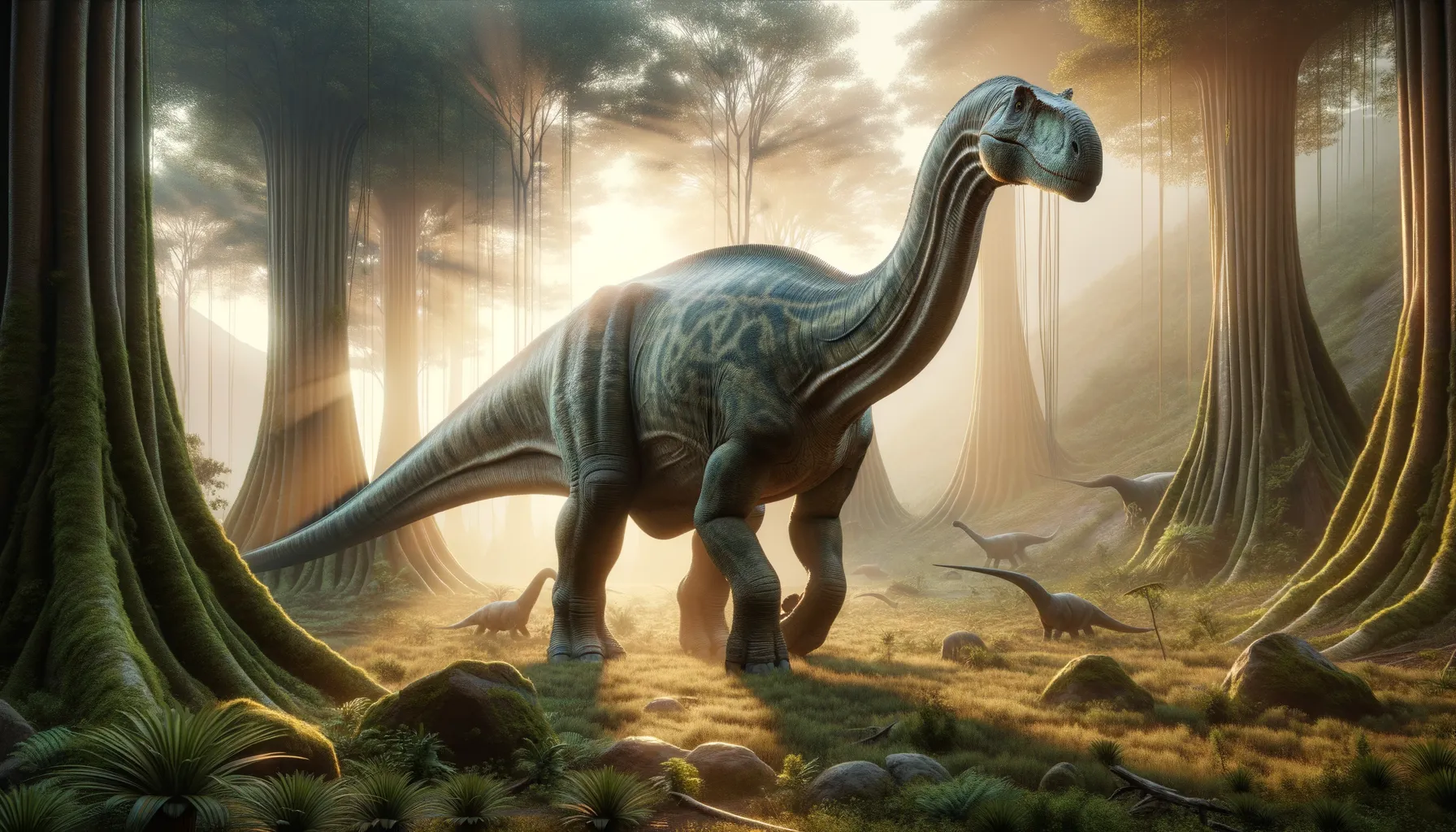
Argyrosaurus
The gentle giant of the Late Cretaceous!
Period
Cretaceous
Length
Could reach up to 30 meters in length.
Height
Approximately 6 meters at the shoulder.
Weight
Estimated to weigh around 20-30 tons.
Argyrosaurus was a giant sauropod dinosaur known for its impressive size and massive, column-like legs. Roaming the land we now call South America during the Late Cretaceous period, it was among the largest dinosaurs of its time. Its long neck allowed it to feed on high vegetation, while its tail helped in balancing its large body. Despite its incredible size, Argyrosaurus was a gentle giant, likely using its size to deter predators rather than aggression.
Diet
Argyrosaurus was a herbivore, feeding primarily on leaves, ferns, and conifer needles. Its long neck allowed it to reach vegetation that was high off the ground, giving it access to a wide range of plant life.
Hunting
As a herbivore, Argyrosaurus did not hunt. Instead, it would have foraged solo or in groups, moving slowly through forested areas in search of food.
Environmental challenges
Living during the Late Cretaceous, Argyrosaurus faced changing climates and environments, including rising sea levels. The spread of flowering plants may have altered its feeding habits, and large predators of the time posed a constant threat. Despite these challenges, its large size and herding behaviour likely offered protection and ensured survival in its diverse and dynamic habitat.
Speed
Argyrosaurus moved slowly due to its massive size.
Lifespan
Estimated to live around 70-80 years.
First discovery
Discovered in Argentina in 1893 by Richard Lydekker.
Fun Facts
- Argyrosaurus, meaning 'silver lizard', got its name not because it was silver-colored, but because its bones were initially stored in silver boxes.
- This massive dinosaur was a sauropod, meaning it had a long neck and tail, similar to more famous dinosaurs like Brachiosaurus.
- Argyrosaurus lived during the Late Cretaceous period, about 90 million years ago, in what is now Argentina.
- Its sheer size is impressive—Argyrosaurus could reach lengths of up to 30 meters (about 98 feet), making it one of the largest land animals ever to have existed.
- Despite its enormous size, it's believed that Argyrosaurus was a herbivore, munching on plants to sustain itself.
- Argyrosaurus shared its environment with other well-known dinosaurs like Carnotaurus, among others, showcasing a diverse ecosystem in ancient South America.
- Only a few fossilized bones of Argyrosaurus have been found, which makes it difficult for paleontologists to fully understand its exact appearance.
Growth and Development
Argyrosaurus hatched from an egg and experienced rapid growth in its early years to reduce vulnerability to predators. Juveniles likely stayed within the safety of the herd, learning social and survival skills. With each passing year, they grew taller and stronger, eventually achieving the impressive size characteristic of adult individuals.
Habitat
Argyrosaurus inhabited lush, vegetated floodplains and forests in what is now South America. These landscapes provided abundant food resources, vital for sustaining such large herbivores. Seasonal variations may have influenced migration patterns as searching for food and water became more challenging during dry periods.
Interaction with other species
Argyrosaurus likely lived in herds, offering protection against predators like abelisaurids. It shared its environment with other herbivores and small mammals, forming an ecologically diverse community. Its sheer size would have put it at the top of the food chain, with predators targeting the more vulnerable young or sick individuals.
Natural lifespan
Argyrosaurus had a natural lifespan of several decades.
Reproduction
Argyrosaurus laid eggs, which were carefully buried in the ground for incubation. This would have been a communal effort, with multiple females laying in the same area. After hatching, the young likely relied on the protection of the herd as they grew and developed.
Social behaviour
Argyrosaurus is believed to have been social, living and moving in herds. This behaviour offered safety in numbers and enhanced their ability to find food. Communication within the herd, through vocalizations or physical gestures, would have been essential for coordinating movements and social bonds.
Fossil locations
Fossils of Argyrosaurus have primarily been found in Argentina, revealing insights into its size and physiology. These fossils help paleontologists understand its place within the ecosystem of the Late Cretaceous. The first discovery was made in the Patagonia region, providing important information about its distribution in ancient South America.
